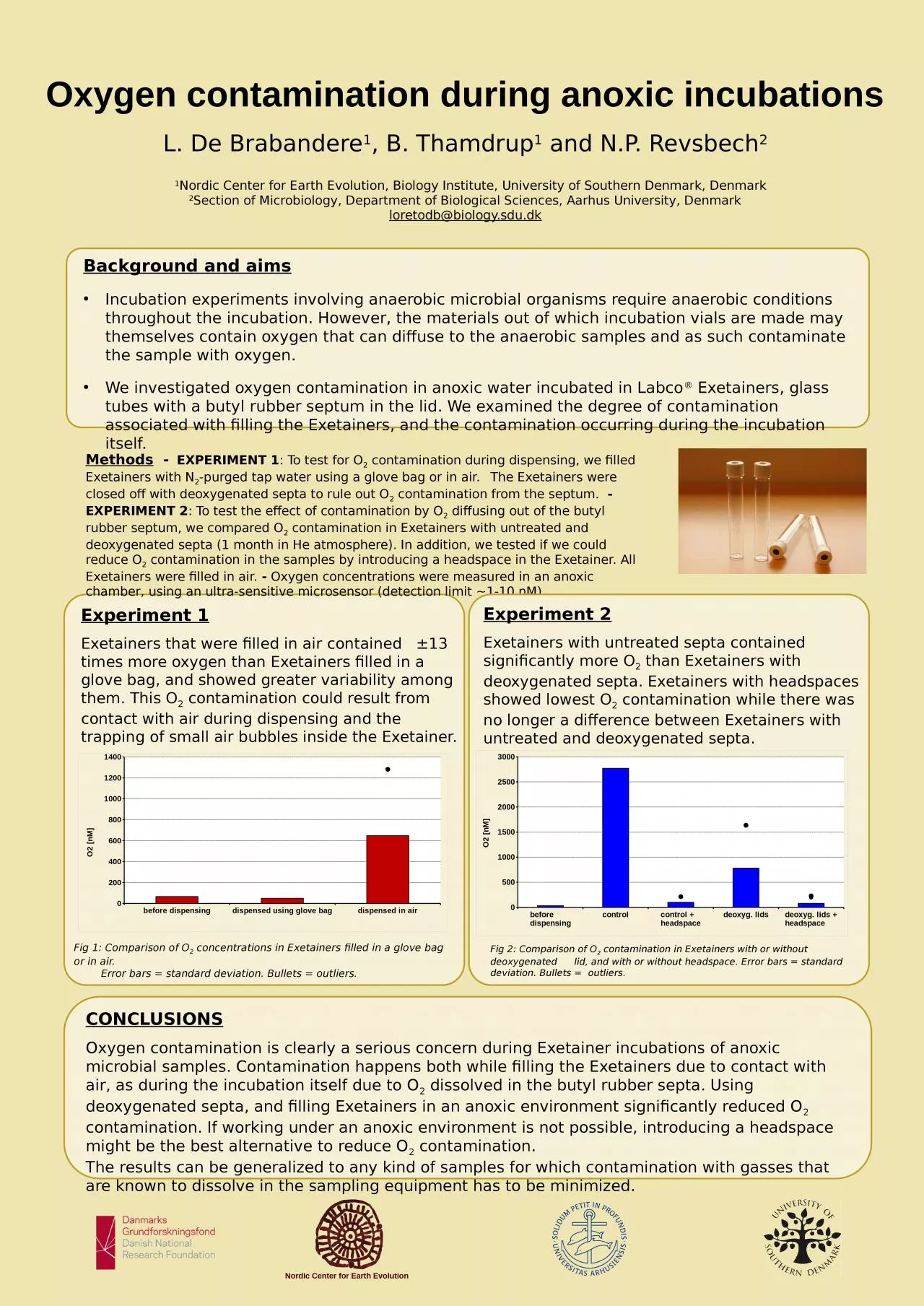

Exetainers filled in a glove bag and showed greater variability among them This O 2 contamination could result from contact with air during dispensing and the trapping of small air bubbles inside the ID: 1033851
Download Presentation The PPT/PDF document "Experiment 1 Exetainers that were filled..." is the property of its rightful owner. Permission is granted to download and print the materials on this web site for personal, non-commercial use only, and to display it on your personal computer provided you do not modify the materials and that you retain all copyright notices contained in the materials. By downloading content from our website, you accept the terms of this agreement.
1. Experiment 1Exetainers that were filled in air contained ±13 times more oxygen than Exetainers filled in a glove bag, and showed greater variability among them. This O2 contamination could result from contact with air during dispensing and the trapping of small air bubbles inside the Exetainer.Background and aimsIncubation experiments involving anaerobic microbial organisms require anaerobic conditions throughout the incubation. However, the materials out of which incubation vials are made may themselves contain oxygen that can diffuse to the anaerobic samples and as such contaminate the sample with oxygen.We investigated oxygen contamination in anoxic water incubated in Labco® Exetainers, glass tubes with a butyl rubber septum in the lid. We examined the degree of contamination associated with filling the Exetainers, and the contamination occurring during the incubation itself.Oxygen contamination during anoxic incubationsL. De Brabandere1, B. Thamdrup1 and N.P. Revsbech2 1Nordic Center for Earth Evolution, Biology Institute, University of Southern Denmark, Denmark2Section of Microbiology, Department of Biological Sciences, Aarhus University, Denmarkloretodb@biology.sdu.dkMethods - EXPERIMENT 1: To test for O2 contamination during dispensing, we filled Exetainers with N2-purged tap water using a glove bag or in air. The Exetainers were closed off with deoxygenated septa to rule out O2 contamination from the septum. - EXPERIMENT 2: To test the effect of contamination by O2 diffusing out of the butyl rubber septum, we compared O2 contamination in Exetainers with untreated and deoxygenated septa (1 month in He atmosphere). In addition, we tested if we could reduce O2 contamination in the samples by introducing a headspace in the Exetainer. All Exetainers were filled in air. - Oxygen concentrations were measured in an anoxic chamber, using an ultra-sensitive microsensor (detection limit ~1-10 nM).CONCLUSIONSOxygen contamination is clearly a serious concern during Exetainer incubations of anoxic microbial samples. Contamination happens both while filling the Exetainers due to contact with air, as during the incubation itself due to O2 dissolved in the butyl rubber septa. Using deoxygenated septa, and filling Exetainers in an anoxic environment significantly reduced O2 contamination. If working under an anoxic environment is not possible, introducing a headspace might be the best alternative to reduce O2 contamination.The results can be generalized to any kind of samples for which contamination with gasses that are known to dissolve in the sampling equipment has to be minimized.Fig 1: Comparison of O2 concentrations in Exetainers filled in a glove bag or in air. Error bars = standard deviation. Bullets = outliers.Fig 2: Comparison of O2 contamination in Exetainers with or without deoxygenated lid, and with or without headspace. Error bars = standard deviation. Bullets = outliers.Experiment 2Exetainers with untreated septa contained significantly more O2 than Exetainers with deoxygenated septa. Exetainers with headspaces showed lowest O2 contamination while there was no longer a difference between Exetainers with untreated and deoxygenated septa.Nordic Center for Earth Evolution